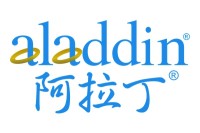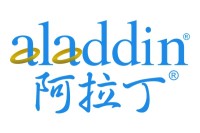Using BiblioSpec for Creating and Searching Tandem MS Peptide Libraries
互联网
- Abstract
- Table of Contents
- Figures
- Literature Cited
Abstract
BiblioSpec is a software package for creating and searching libraries of tandem MS peptide spectra. Library searching provides a quick method for making peptide?spectrum matches by comparing a query spectrum to a collection of reference spectra of known peptide sequence. Pre?assembled libraries for several model organisms can be used as the basis of a search or custom libraries can easily be assembled. The protocols in this unit describe installing BiblioSpec, searching libraries, and creating custom libraries. Curr. Protoc. Bioinform. 20:13.7.1?13.7.12. © 2007 by John Wiley & Sons, Inc.
Keywords: proteomics; peptide spectrum library; peptide identification
Table of Contents
- Introduction
- Basic Protocol 1: Using BlibSearch to Make Peptide Identifications
- Support Protocol 1: Downloading and Installing BiblioSpec
- Support Protocol 2: Using BlibBuild to Construct a Mass Spectrum Library
- Guidelines for Understanding Results
- Commentary
- Literature Cited
- Figures
- Tables
Materials
Figures
-

Figure 13.7.1 Example of BlibSearch output in modified SQT file format. Following the header, each query spectrum (in this case four) is described on lines beginning with S followed by the scan number (for example, the first spectrum is 804), charge state (in this case 2), two place‐holder values, the precursor m/z (in this case 531.21), a place holder value, and the number of library spectra compared to the query (in this case 201). The five best matches follow on separate lines. Following the M is the rank of the match, the number of duplicate spectra for this sequence in the unfiltered library (for the best mach for the first spectrum 4), the precursor m/z for the library spectrum (in this case 529.96), deltaCn (a measure of the difference between two matches), the similarity score (0.60708), I.D. number of the library spectrum (227239), number of peaks matched (41), number of peaks in the processed library spectrum (100), sequence of the library spectrum (VSTQHEKET), and the validation status (Y if the similarity score for the best match is above the threshold, N if it is below, and U for all matches higher than rank 1). View Image -

Figure 13.7.2 BlibSearch output in report file format. Following the header are the five best matches for each query spectrum. Each line lists the query spectrum scan number, the library number (only relevant if more than one library is searched), the library spectrum I.D. number, the similarity score, match rank, m/z of the query spectrum, charge of the query spectrum, m/z of the library spectrum, charge of the library spectrum, annotation code for the library spectrum, number of duplicates in the unfiltered library, and the sequence of the library spectrum. View Image -

Figure 13.7.3 An example spectrum sequence list (SSL) file. View Image -

Figure 13.7.4 Examples of matches between query and library spectra. (A ) A good match between a query spectrum (bottom) the library spectrum (above) for sequence EKEVDQVIVVTVDNPFANQAWAK and a similarity score of 0.89. A query spectrum may not have a good match for two reasons. (B ) A query (below) with little signal has a low‐scoring (0.59) library match. (C ) A good‐quality query spectrum (below) may only have low‐scoring matches to the library if its peptide is not represented in the library. The best match, shown here above the query spectrum, has a score of 0.30 to the library spectrum with sequence DLIEQIVLQLR. The true sequence for the query spectrum, CKEVGITAVHVK, was not in the library. View Image
Videos
Literature Cited
| Literature Cited | |
| Craig, R., Cortens, J.C., Fenyo, D., and Beavis, R.C. 2006. Using annotated peptide mass spectrum libraries for protein identification. J. Proteome Res. 5:1843‐1849. | |
| Frewen, B.E., Merrihew, G.E., Wu, C.C., Noble, W.S., and MacCoss, M.J. 2006. Analysis of peptide MS/MS spectra from large‐scale proteomics experiments using spectrum libraries. Anal. Chem. 78:5678‐5684. | |
| Heller, S. 1972. Conversational mass spectral retrieval system and its use as an aid in structure determination. Anal. Chem. 44:1951‐1961. | |
| Lam, H., Deutsch, E.W., Eddes. J.S., Eng, J.K., King, N., Stein, S.E., and Aebersold, R. 2007. Development and validation of a spectral library searching method for peptide identification from MS/MS. Proteomics 7:655‐667. | |
| Liu, J., Bell, A.W., Bergeron, J.J., Yanofsky, C.M., Carrillo, B., Beaudrie, C.E., and Kearney, R.E. 2007. Methods for peptide identification by spectral comparison. Proteome Sci. 5:3. | |
| McDonald, W.H., Tabb, D.L., Sadygov, R.G., MacCoss, M.J., Venable, J., Graumann, J., Johnson, J.R., Cociorva, D., and Yates, J.R., 3rd. 2004. MSI, MS2, and SQT‐three unified, compact, and easily parsed file formats for the storage of shotgun proteomic spectra and identifications. Rapid Commun. Mass Spectrom. 18:2162‐2168. | |
| Stein, S.E. and Scott, D.R. 1994. Optimization and testing of mass spectral library search algorithms for compound identification. J. Am. Soc. Mass Spectrom. 5:859‐866. | |
| Yates, J.R. 3rd, Morgan, S.F., Gatlin, C.L., Griffin, P.R., and Eng, J.K. 1998. Method to compare collision‐induced dissociation spectra of peptides: Potential for library searching and subtractive analysis. Anal. Chem. 70:3557‐3565. |





